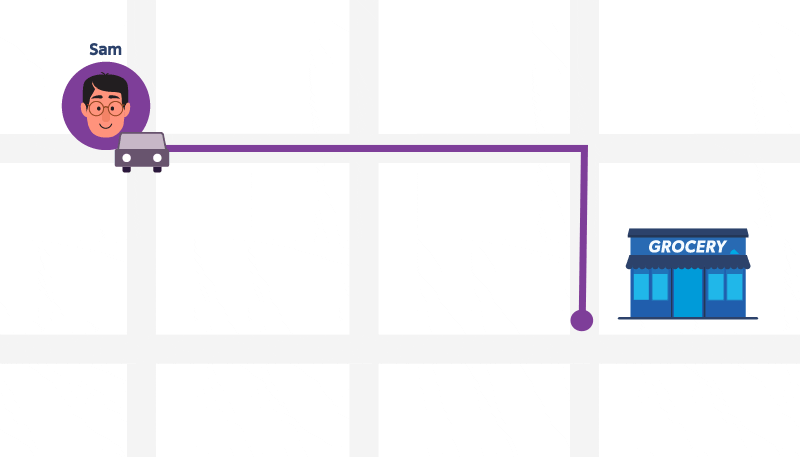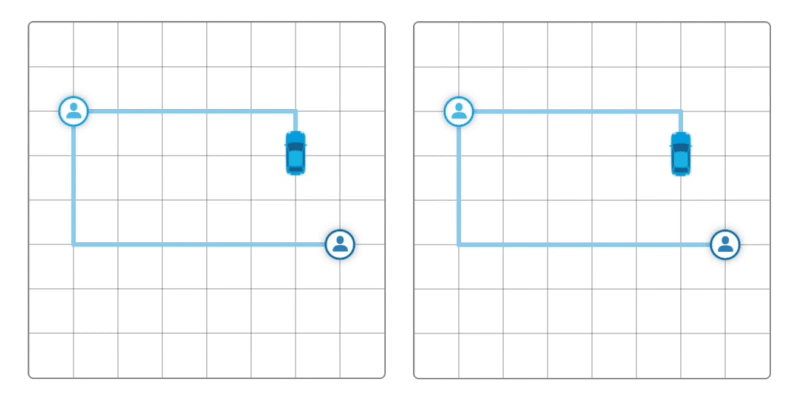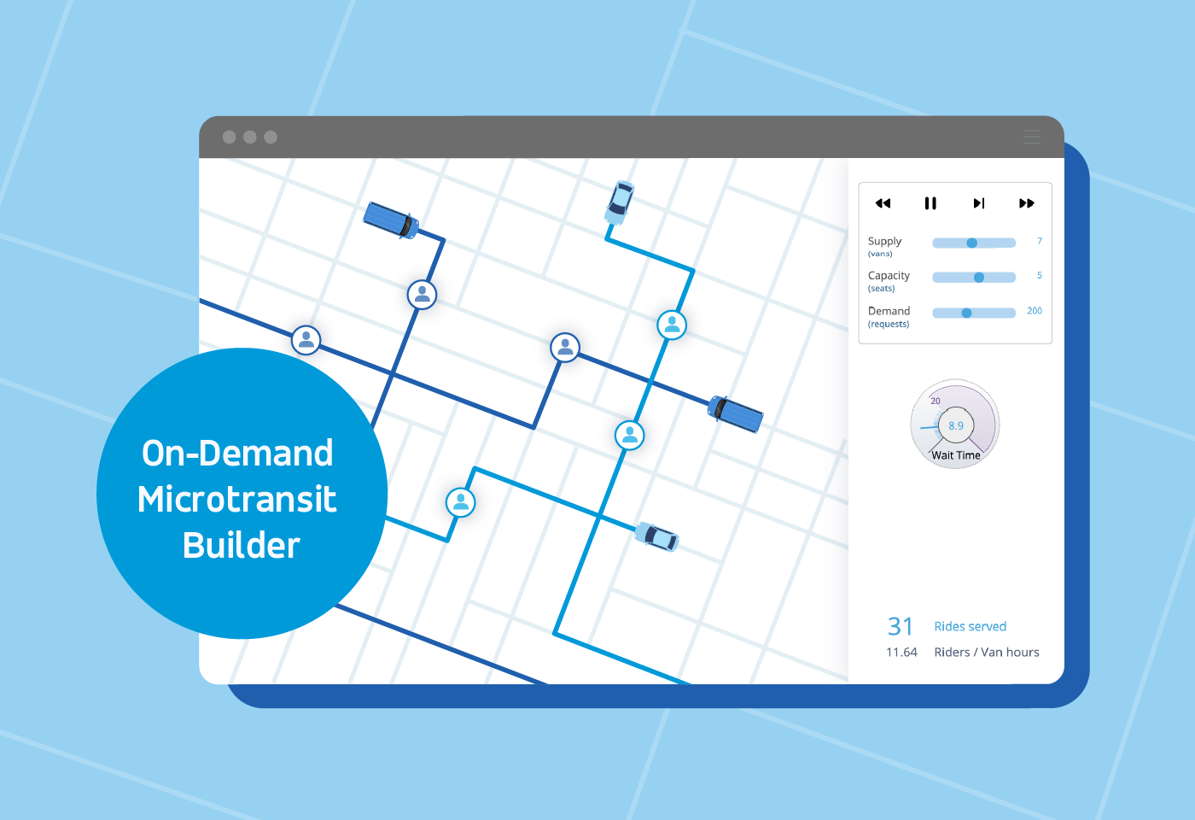First, the basics. Let’s dive in.
Let’s start with the simplest scenario: Sam wants to go to the grocery store, so he hails a ride. Sam is picked up, dropped off, and the vehicle proceeds to pick up its next passenger, Violet. Wait a minute — Sam and Violet are headed in the same direction. Why can’t they ride together? Microtransit makes this trip more efficient by allowing Sam and Violet to share their ride.
Check out the routes below. The lighter circles represent pickup locations; the darker ones are dropoff locations. On the left, Sam and Violet each ride on their own. On the right, the algorithm pairs them in the same vehicle, and since they’re headed in the same direction, everyone wins:
Microtransit makes this trip more efficient by allowing Sam and Violet to share their ride.
Check out the routes below. The lighter circles represent pickup locations; the darker ones are dropoff locations. On the left, Sam and Violet each ride on their own. On the right, the algorithm pairs them in the same vehicle, and since they’re headed in the same direction, everyone wins:
- Violet is picked up and dropped off sooner than if she had ridden solo.
- Serving both rides with one vehicle rather than two means less traffic, and produces half the emissions.
- Sam and Violet’s trips are less expensive because they share. The only cost to Sam is a slight deviation from the most direct path.
 Ta-da! More efficient rides.
Imagine the massive impact of these little efficiencies, multiplied to scale, pooling not just Sam and Violet, but many people headed in similar directions. Using the tool below, you can see what a basic on-demand microtransit service could look like at various supply and demand levels, with representative limits on detours and vehicle capacities. [via-sim-embed id="tool_1"]
Ta-da! More efficient rides.
Imagine the massive impact of these little efficiencies, multiplied to scale, pooling not just Sam and Violet, but many people headed in similar directions. Using the tool below, you can see what a basic on-demand microtransit service could look like at various supply and demand levels, with representative limits on detours and vehicle capacities. [via-sim-embed id="tool_1"]
Your fleet, your rules.
- Supply: How many vehicles are in your fleet?
- Capacity: How many usable seats do you want on each vehicle?
- Demand: How many requests do you expect potential riders to make? Naturally, we want to be able to serve as many ride requests as possible.
So, how’d you do?
Based on the choices you made when exploring the models, did you learn anything about how they affected the service? Here are a few things to consider:- Wait time: How long did passengers have to wait for a ride given the level of demand and number of vehicles in your fleet
- Rides served: How many people who requested a ride were given an option that they accepted, and then completed?
- Utilization (rides per vehicle hour): How efficient was your use of vehicles?




%206.png?width=71&height=47&name=The%20Buzz%20Blog%20Hero%20(1750%20x%201200%20px)%206.png)